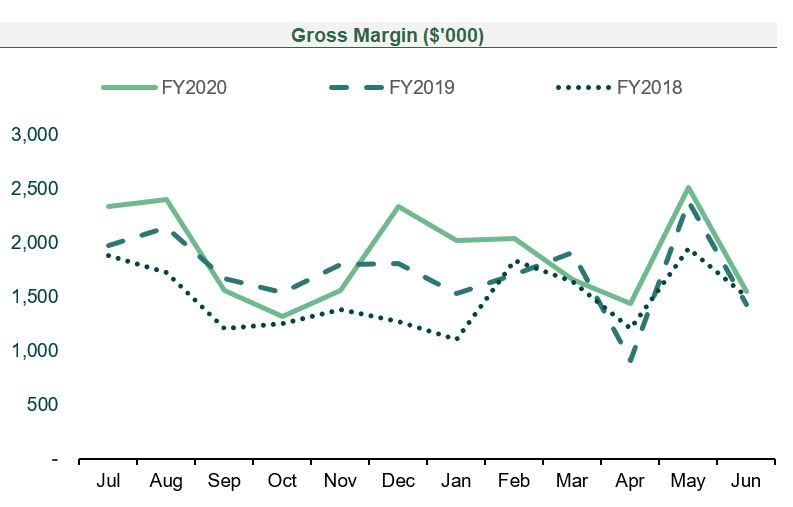
For most Australians, December is either a time where your foot is flat to the floor, or you’re winding down and focusing on the next end of year lunch.
Knowing which camp you fit into is vital for all Australian small and medium businesses.
For the gelato store near St Kilda beach in Melbourne a warm summer with more tourists and beach days can make their business profitable for the entire year, even through the dark days of winter. The same goes for the retail stores, which despite declining economic environment, often rely on a very busy Christmas to buoy their annual turnover.
However, for others, like consulting firms or those in financial services, December signals a time to wind down. Often businesses will really slow down over late December and early January, with some taking a much needed break.
Whichever camp, or another, you’re in, it is important to understand how seasonality will affect you.
What is seasonality?

First, a quick explainer. If you have a salaried job, you are paid the same amount every month for the year. Business doesn’t often operate like this. There will be one, or multiple times a year, where you will have peak earning opportunity, or a low period. It might be related to calendar year, or influenced by other economic or external circumstances.
For example for a retailer that sells hardware, knowing the times of the year that will impact the type of purchasing can make or break a business. A business like Masters that reportedly didn’t understand seasonality of stock on hand for hardware purchases is lowering the capacity during high periods of demand and oversupplying capacity in low periods of demand. This creates big issues for cash flow and profitability.
You must know when this affects your business, understand your revenue model, and what factors are under your control. Remember that to realise the opportunity where demand is highest, you’ll need to ensure you have the capacity to deliver.
What do you need to know?
Knowing what you can’t control is the first step, then it is about solid business planning. You’ll need to know how to keep your business operational through down times, and thriving in boom times. You can prepare by using an accurate financial model to forecast how much money you’ll spend, make and receive over a year. That will include an understanding of when your busy times are and the ability to better ensure you have the capacity available to deliver appropriately during these times.
A financial model that includes historical trading performance can provide some guidance to your trading patterns. That way you’ll be able to prepare for times when your incoming and outgoings don’t quite line up. Understanding your liquidity requirements (how much cash you need) is supremely important.
What can I do to prepare?
There are several steps you might need to take to prepare for seasonal flux in your business.
Ensure cash flow: Understanding your peaks and troughs will allow you to properly plan for times to invest in staff, equipment, growth, inventory and any other business needs.
Use marketing wisely: Marketing is an important part of any business and should be considered a vital ongoing process. It is especially important in periods where you feel “busy” or where “capacity” is being hit. Business Development and building a pipeline is important and you won’t realise the importance of keeping this full until you don’t have it.
Hire strategically: Busy times aren’t the best times to hire, as with anything, it takes time to onboard, train etc.
Not being proactive about hiring during the “quiet” times might be good for minimising costs at that time, but it may mean that during heavy demand periods, you won’t have the capacity to maximise for the demand.
The cost of lost opportunity can be as damaging, if not more than saving on costs.
Seasonality is an important factor in all facets of your business, these tips should help you prepare and thrive through those times of flux and growth.
We hope this article has provided you with insights to better understand your business needs. Explore our financial management solutions and see how we can help you achieve your business goals. If you’ve got any questions, feel free to send us a message.
